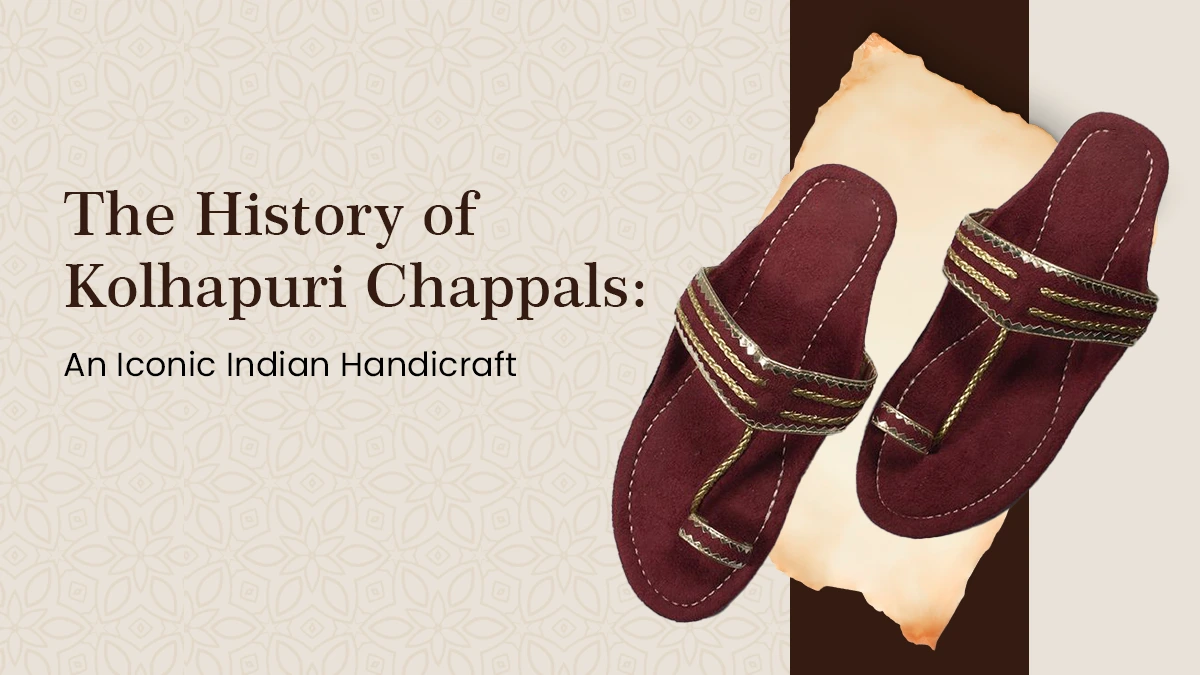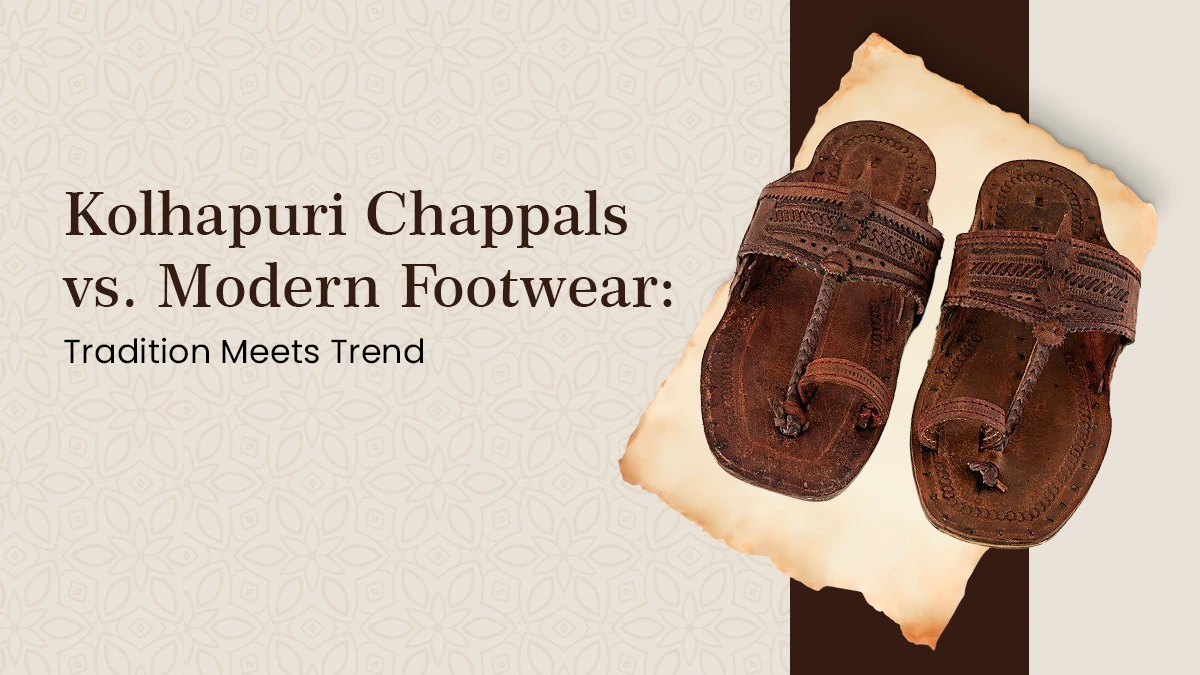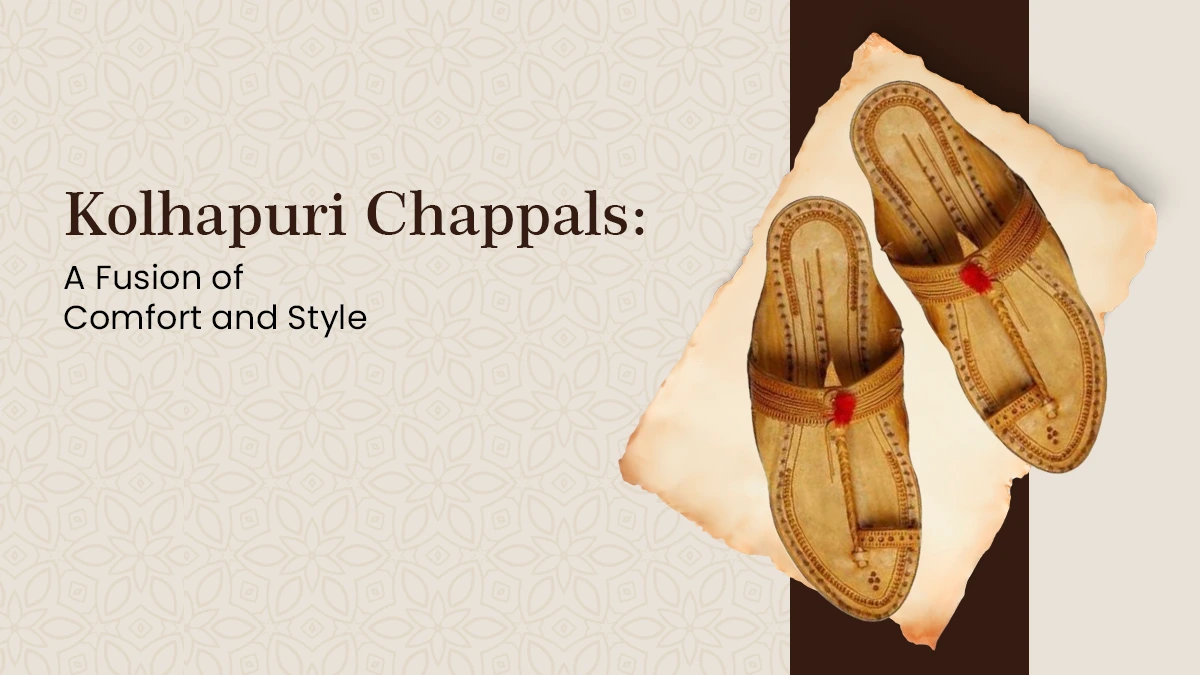The History of Kolhapuri Chappals: An Iconic Indian Handicraft

Kolhapuri chappals are more than just footwear; they are a symbol of traditional Indian craftsmanship and cultural heritage. These handcrafted leather sandals, originating from the Kolhapur region in Maharashtra, India, have a rich history that spans centuries. Here’s a look at how Kolhapuri chappals evolved and gained global recognition.
Ancient Origins of Kolhapuri Chappals
The history of Kolhapuri chappals dates back to the 12th century, during the reign of the Chhatrapati kings. Skilled leather artisans known as ‘Chambhars’ in Kolhapur began creating these durable yet stylish sandals for both royalty and commoners. Unlike modern footwear, these chappals were entirely handmade, with no use of nails or industrial machinery. The sandals were crafted from buffalo hide and vegetable dyes, making them both eco-friendly and comfortable.
Traditional Craftsmanship: The Essence of Kolhapuri Chappals
What sets Kolhapuri chappals apart is the intricate craftsmanship involved in their creation. Artisans painstakingly cut and sew leather strips by hand, often spending days to complete a single pair. The designs range from simple patterns to more ornate and embellished ones, depending on the occasion or customer preference. Traditional Kolhapuris are known for their long-lasting durability and unique style.
The Rise of Kolhapuri Chappals in Popularity
In the early 20th century, Kolhapuri chappals gained popularity beyond the Kolhapur region. Mahatma Gandhi himself advocated for the use of handmade, locally-produced goods, which brought these chappals into the national spotlight. Soon, they became a symbol of self-reliance and traditional Indian craftsmanship.
By the 1970s and 1980s, Kolhapuri chappals found a place in the global fashion scene. Tourists visiting India started buying these sandals as souvenirs, and international fashion houses began taking note. Designers have since incorporated the Kolhapuri style into modern footwear, blending tradition with contemporary design elements.
The Kolhapuri Chappal Today
Today, Kolhapuri chappals are more than just footwear—they are a fashion statement. They are worn by people across India and globally, appreciated for their ethnic charm and comfort. While artisans still rely on traditional methods, modern techniques have also been introduced to make the chappals more accessible and versatile for today’s fashion needs. You can find Kolhapuri chappals in different colors, sizes, and patterns, catering to a diverse audience.
Geographical Indication (GI) Tag for Kolhapuri Chappals
In 2019, Kolhapuri chappals received the Geographical Indication (GI) tag, recognizing their uniqueness and cultural significance. This GI tag ensures that only genuine Kolhapuri chappals from the Kolhapur region can be marketed under this name, preserving the legacy and craftsmanship of these iconic sandals.
The Future of Kolhapuri Chappals
As fashion trends continue to evolve, Kolhapuri chappals remain timeless. Today’s designers are blending traditional craftsmanship with modern aesthetics, keeping the spirit of these iconic sandals alive. From fashion runways to everyday wear, Kolhapuris have a bright future in both Indian and global markets.
Conclusion
Kolhapuri chappals stand as a testament to India’s rich cultural heritage and artisanal craftsmanship. Whether you’re wearing them as a tribute to tradition or as a stylish accessory, these sandals have a storied history that continues to inspire fashion lovers around the world.




